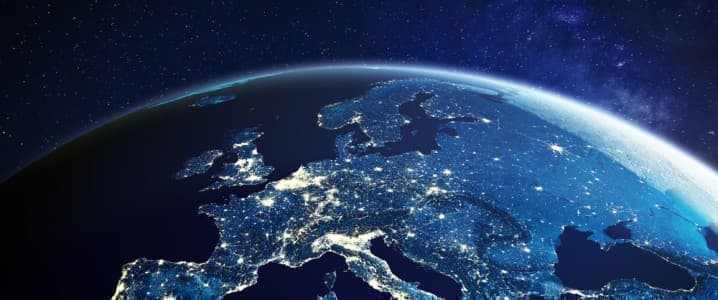So far, Europe’s energy crisis has not been as bad as we had feared. After gas prices soared in the wake of Russia’s invasion of Ukraine, things have stabilized. Consumers have responded to skyrocketing energy prices by lowering demand, the continent has managed to fill its liquefied natural gas (LNG) storage containers, and an unseasonably warm autumn has allowed people to keep their heating bills relatively low. Gas prices have fallen from $100 per million British thermal units in August to $39. The Brent crude oil benchmark has dropped from its post-pandemic peak of $139 in March to $93. Headlines about the end of the European energy crunch have abounded. But they may have spoken too soon.
As the days grow colder, the European energy supply will once again grow tight. Ironically, the situation may be worsened by the recent respite of energy tensions. “Analysis suggests that complacency is dangerous,” a recent Economist article states. “Things could get very bad, very fast.” The Economist analysis includes three possible trajectories for European energy markets during the winter, and none of them are good.
The first simulated scenario assumes that the tense political relations between Russia and Europe do not deteriorate even further, but that the situation remains more or less the same. This is to say that the Nord Stream pipeline that transports LNG from Russia to Germany remains closed and Europe follows through with its embargo on Russian crude oil and restrictions on insuring the vessels that carry it. This is a rather ideal scenario for Europe, in that it “triggers a crisis but not a catastrophe.” Supplies will be tight and prices will be painfully high, but Europe will make it through the winter without the wheels falling off. The second scenario assumes escalation and supposes that Russia completely shuts off the flow of LNG to Europe and causes the continent tens of billions of dollars in extra costs. The third, most extreme scenario supposes that Russia gives up entirely on diplomacy and holding on to fossil fuel revenues and destroys Europe’s gas import infrastructure leading to an “excruciating squeeze.” In this model, Europe’s annual import-gas bill nears $1 trillion and still faces extreme energy shortages through 2024. Clearly, even in the best scenario, Europe has a long, cold winter ahead – and then years of energy security troubles and delicate diplomacy to manage after that. The outlook is extremely grim for European citizens who will have to bear a large part of these costs in order to keep their homes heated. Projections show that 26 million people in the United Kingdom alone are expected to sink into energy poverty over the winter months – that’s one in three households. And the UK will probably be rather well off compared to many other European countries.
Related: Are Nickel Prices Poised For A Breakout?
For countries that were relatively wealthy before the energy crisis, skyrocketing prices will be painful, but they will be even more crushing for the many European countries that had trouble keeping the heat on even before the Russian invasion of Ukraine. “In the European Union, nearly seven percent of the population was not able to heat their home properly in 2021,” the World Economic Forum recently reported. Countries in southern and eastern Europe were among the most energy-impoverished last year, and this year is certain to be much, much grimmer for those nations.
According to data from last year, Bulgaria was the country with the highest rate of fuel poverty in the European Union, with nearly one in four Bulgarians (23.7 percent) struggling to pay their energy bills. Bulgaria was followed by Lithuania (22.5 percent) and Cyprus (19.4 percent). By contrast, the richest countries had less than 1% of energy poverty. These were Switzerland (0.2 percent) and Norway (0.8 percent). “When data for 2022 comes out,” the World Bank report stated, “we can expect these figures to be worse.” And even under the best-case scenario, according to the Economist, the numbers for 2023 and 2024 will likely make 2022 look like a cakewalk.
By Haley Zaremba for Oilprice.com
More Top Reads From Oilprice.com:
- China Expands Its Footprint In Central Asia As Russian Influence Flounders
- World Oil Demand Topped Pre-Covid Levels In September
- Germany Braces For “Aggressive Discontent” Ahead Of Winter Power Cuts


















